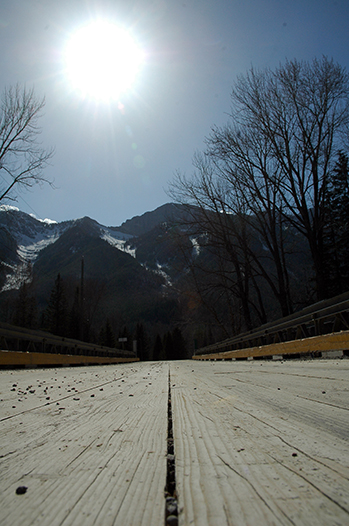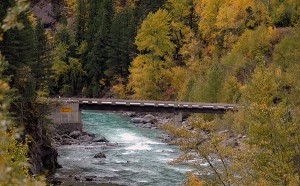Home »

Investigation finds unsafe bridges on forestry roads
An investigation of 216 bridges constructed throughout the province in the last three years has found numerous non-compliances with legislation and over two dozen bridges that may not be safe for industrial use, according to a report released March 5. Fifty-six of those bridges are located within the Rocky Mountain Forest District.

“The Rocky Mountain and Chilliwack districts showed below average performance with respect to safety issues. Certainly the June 20, 2013, storm event in the Kootenays contributed to eroded abutments and foundation failures, but that was not the only safety issue. Some bridges are being classified as temporary by builders and designed and built to a lower standard, which is not permitted by the legislation,” states the report.
“On or about June 20, 2013, large and intense storms hit parts of the East Kootenay. These were the same storm systems that caused widespread flooding in Alberta. Unprecedented levels of precipitation fell in a number of river valleys, including the White, Bull and Elk Rivers. Weather stations in the Cranbrook area recorded over 100 millimetres of rainfall. The extreme rainfall combined with a high snow pack caused significant flood events on streams and rivers throughout the East Kootenay.
“Over 40 bridges were damaged or destroyed as a direct result of the extreme flood levels. The storms were estimated to be a one in 100-year event to a one in 500-year event. This highlights the need for proper peak flow calculations when designing major bridges, especially in the mountainous regions of British Columbia,” the report outlined.
“The board was concerned with the growing number of instances of unsafe bridges showing up in recent audits, and so we did this investigation to find out the extent of the problem,” said Tim Ryan, board chair.

“What we found is highly disturbing, given the emphasis government and industry have placed on safety in recent years.”
The investigation found 19 bridges that were obviously unsafe and another 13 bridges that were questionable. Forty per cent of the bridges did not have complete plans and for 74 bridges, the required sign-off by a professional that the bridge was designed and built correctly was not completed.
“The problem is not the lack of legislation or guidance by professional associations,” said Ryan. “The problem is that some professionals are not performing to the standards government and the public expect. We are recommending that the professional associations that govern foresters and engineers take action to improve performance by their members. We also suggest that licensees ensure their bridges are safe and government compliance and enforcement staff increase their attention to bridge safety.”
Bridges constructed in the Rocky Mountain, Chilliwack, Vanderhoof, Okanagan Shuswap and Cariboo Chilcotin forest districts since January 2010 were included in the investigation.
The Forest Practices Board is B.C.’s independent watchdog for sound forest and range practices, reporting its findings and recommendations directly to the public and government. The board can investigate and report on current forestry and range issues and make recommendations for improvement to practices and legislation.
Bridge Planning Design and Construction.pdf
e-KNOW







